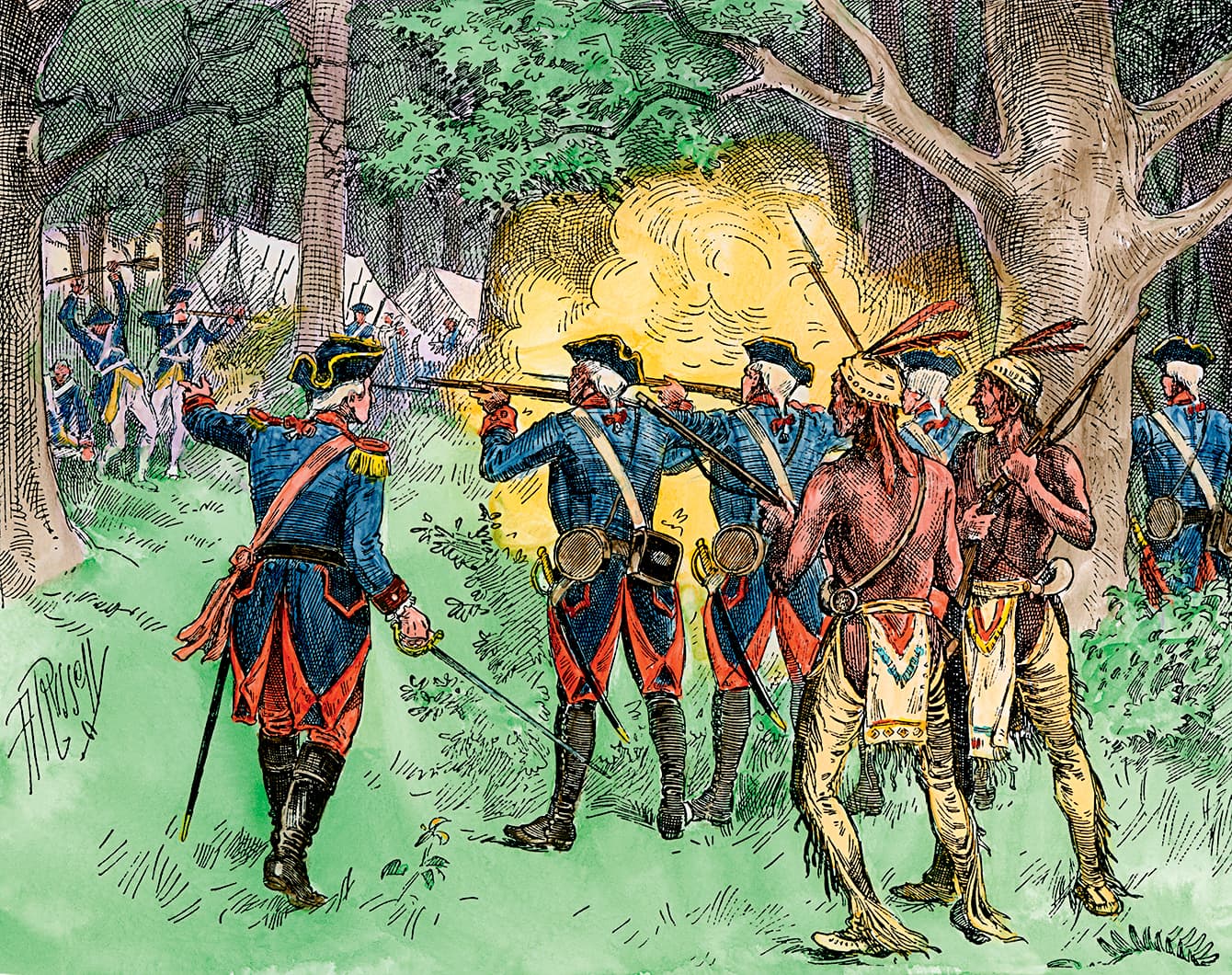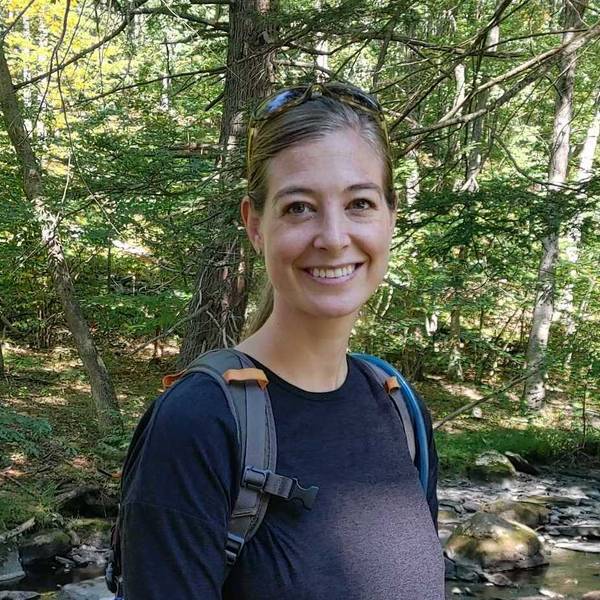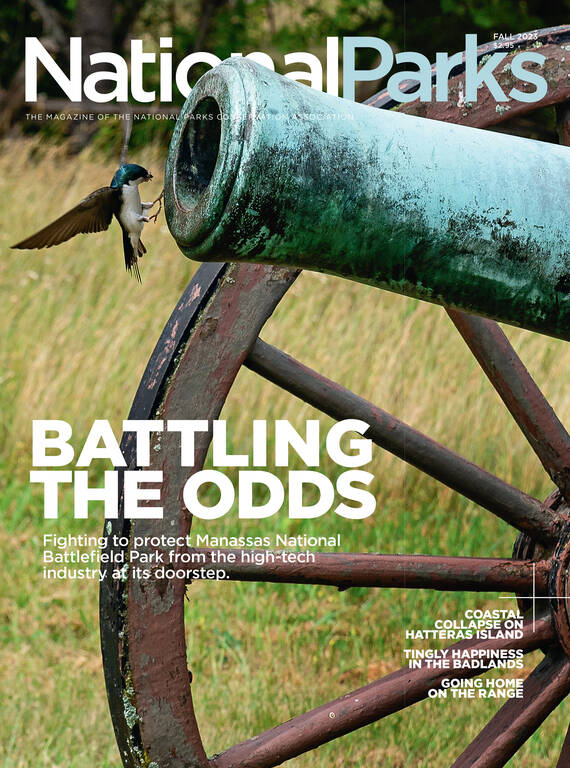Fall 2023
Lead Proof
A recent ballistics discovery at Fort Necessity National Battlefield confirmed where the French and Indian War began.
For 30 years, Brian Reedy has been plagued by one question: Where, precisely, did the first shots of the French and Indian War take place? This May, the Fort Necessity National Battlefield volunteer-turned-full-time-staffer got his answer.
Historians largely agree that the opening salvo of this epic contest, which ignited over the control of riverways in the American colonies but spilled over onto four other continents as Britain and France’s imperial sparring intensified, occurred at Jumonville Glen in southwestern Pennsylvania. The site, which has been part of the park since the 1970s, is located 7 miles from the main fort. Written accounts indicate that a 22-year-old George Washington, accompanied by 33 soldiers and up to a dozen Native American allies and acting under the British flag at the request of Virginia Gov. Robert Dinwiddie, surprised a contingent of Frenchmen after traveling all night in lashing rain. The ensuing attack, which Reedy called “15 minutes that changed the world,” left all but one of Washington’s opponents dead or captured. (Washington’s side suffered just one fatality.) Though the repercussions of that 1754 confrontation rippled far and wide, from the French retaliation at Fort Necessity just weeks later to the ensuing years of all-out war to the American colonists’ eventual uprising against British rule, no physical evidence had surfaced to verify the location of the so-called Jumonville Affair.

A hand-colored woodcut depicting George Washington’s 1754 attack on a French encampment near Fort Necessity in Pennsylvania. ©NORTH WIND PICTURE ARCHIVES/ALAMY STOCK PHOTO
“It was always an assumption” that the skirmish took place on the 15 acres owned by the park, said Reedy, the park’s chief of interpretation. But it also could have occurred farther down the forested ravine.

To Collect or Not to Collect
As higher visitation and climate change increasingly threaten artifacts, can the Park Service afford to leave them in place?
See more ›This spring, Reedy’s years of doggedly nudging management paid off with a monthlong archaeological investigation. First, a team of four cadaver dogs scoured the park-owned ground. To avoid potentially disturbing the unmarked graves of the 14 people who died in the 1754 clash, the archaeologists excluded the two areas flagged by the canines from the next phases of the work, which included mapping, using laser light to create high-resolution images of the land and, finally, metal detecting. Jumonville Glen’s varied past — prior to Park Service acquisition — added a certain junk-drawer quality to the search. Reedy said they unearthed coins, lipstick cases, toys, tools from past logging activities and plenty of bullets from 20th-century hunters. They also waded through countless false positives in the form of beer and soda can tabs. “Pull tabs and bullets give off the same beeping sound from a metal detector,” he said.
In the end, the crew of 20 or so people — including Reedy and William Griswold, an archaeologist for the Park Service’s Northeast region — managed to haul off loads of garbage and uncover five .60- or .70-caliber bullets, the size used in the muskets of the 18th century. These misshapen projectiles are, in Reedy’s words, “quite possibly, or literally, the first bullets fired in the French and Indian War.”

National Parks
You can read this and other stories about history, nature, culture, art, conservation, travel, science and more in National Parks magazine. Your tax-deductible membership donation of $25 or more entitles…
See more ›Now, a graduate student at Indiana University of Pennsylvania is analyzing the marblelike balls in hopes of pinpointing where the lead was mined. This information could help determine which guns fired the recovered ammunition, Griswold said. And because the field crew attached precise GPS coordinates to the artifacts they collected, they may be able to work backward to ascertain which side fired which shot. Perhaps, he said, this data — coupled with additional research — could shed light on other long-standing mysteries surrounding the Jumonville Affair. Was it an ambush? Who took the first shot? Were the Frenchmen soldiers or diplomats?
Once these unassuming lead plugs have surrendered as many secrets as modern technology can glean, they’ll likely go on display for special occasions, according to Reedy, who still gets excited remembering their weight in his hand. “To actually hold something that has been in the ground for 269 years and the last time it was held by a human being was when it was loaded into a musket and fired in anger is way cool,” he said. “It ranks up there with holding your kids for the first time.”
Park staff would like to remind visitors that it is illegal to hunt for artifacts in national park sites and/or remove them.
About the author
-
 Katherine DeGroff Associate and Online Editor
Katherine DeGroff Associate and Online EditorKatherine is the associate editor of National Parks magazine. Before joining NPCA, Katherine monitored easements at land trusts in Virginia and New Mexico, encouraged bear-aware behavior at Grand Teton National Park, and served as a naturalist for a small environmental education organization in the heart of the Colorado Rockies.



